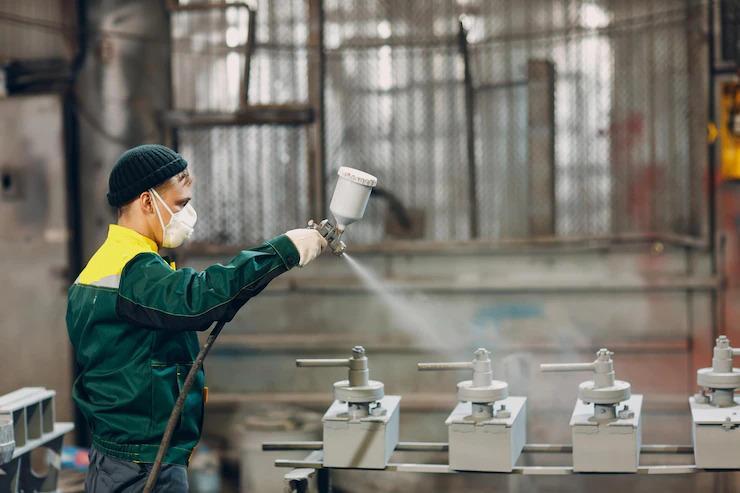To maintain the finish of a powder-coated metal surface, you should know the proper cleaning
methods. Some powder-coated surfaces require chemical pretreatments, while others can be wiped
down with a soft cloth and light detergent. Understanding the requirements for cleaning powder-
coated metal will help extend the service life of your product.
Pretreatments
Before applying powder coating in NJ, surfaces should be prepared using pretreatments.
Pretreatments involve cleaning the surface with abrasive media. This step aims to clean the surface
so that the powder coating will adhere to it. It also prevents the surface from becoming damaged.
This step is vital for the quality of the finished product. However, there are several methods to clean
the surface. Let’s look at some of them.
Pretreatments for powder-coated surfaces can be performed as three or five-stage processes. The
first stage is called the pretreatment stage, and if a part is not cleaned through this stage, the
powder coating will not work correctly. This powder coating cleaner involves alkaline solutions that
contain surfactants to reduce surface tension. The concentration of the solution is controlled to
obtain the desired results. The dwell time is usually 90 seconds, and the drain zone is long enough to
prevent the cleaning solution from leaking into the next cycle but short enough to avoid drying out
the part.
Cleaning
When it comes to cleaning powder-coated metal surfaces, it’s best to use a noncorrosive cloth or
cleaning solution. You can also use a nonabrasive soft brush to remove dust and dirt. Avoid using
aggressive cleaning products such as turpentine or thinners. After cleaning, rinse with clean water.
A pressure washer can help you remove dirt and debris from powder-coated metal. But, you should
make sure that you use a low-pressure setting to prevent the coating from being damaged. It’s also
essential to use filtered water when using a pressure washer. Unfiltered water is harsh on powder-
coated metal and will degrade the coating.
When cleaning powder-coated surfaces, use a powder-coating cleaner free of petroleum-based
chemicals and solvents. In addition, use a soft cloth to wipe down powder-coated metal. Lastly, let
the surface dry naturally. Never use detergents that require gloves, as they will damage the powder-
coated surface.
Polishing
Impurities in the powder coating can make it challenging to adhere correctly. If you want to protect
powder coating, there are several steps that need to be taken in order to polish the surface properly.
The first step is to clean the surface thoroughly. You can do this by using an all-purpose cleaner. If
dirt or debris is present on the surface, you can use mineral spirits to remove them. You should also
use a putty knife to remove any protruding paint. Once this step is complete, you can use medium-
grit sandpaper to smooth the surface.
You can also use a mix of clear lacquer, nail polish, or hair spray for touch-ups. However, these are
not professional products and may need to be purchased in bulk. In addition, the repaired area may
not be as durable as the original cured surface.
Chemical Treatments
Chemical treatments for powder-coated metals are used to prepare the surface for the powder coat
restoration process. These methods are able to remove various impurities from the surface and help
the coating adhere properly. Moreover, these methods are also cheap and easy to automate.
However, they are incredibly harsh on the environment. Hence, you must choose the proper way
according to the size and type of the part. For instance, if the part is made of heat-sensitive plastic, a
plasma treatment may be necessary to improve its adhesion properties to the powder coating. You
also need to consider the performance requirements for the finished product.
Chemical treatments to maintain powder coating in NJ include degreasing, etching, and cleaning.
They may be performed in several steps and may involve different rinses. These steps aim to
improve the bond between the powder and the metal. Some of the chemical treatments used today
use nanotechnology to increase the bonding strength of the coating to the metal.
Protecting Powder-Coated Surfaces
It is essential to follow proper procedures for cleaning powder-coated metal. Some of these include
using a light detergent or sponge to clean the surface. Others may require a soft brush and soapy
water. Understanding these cleaning requirements is essential to extending the service life of these
surfaces. In addition, a regular cleaning routine can prevent weathering and prevent the appearance
of chalking.
Keeping it in good condition is essential to protect powder coating. The surface will become dull and
damaged if you fail to do this. It is vital to regularly clean metal surfaces so as to avoid rust or other
damage. Cleaning any rust or further damage as quickly as possible is also crucial. If the damage is
severe, you should get professional help. Proper cleaning and maintenance will double or even triple
the service life of your powder-coated metal parts.


